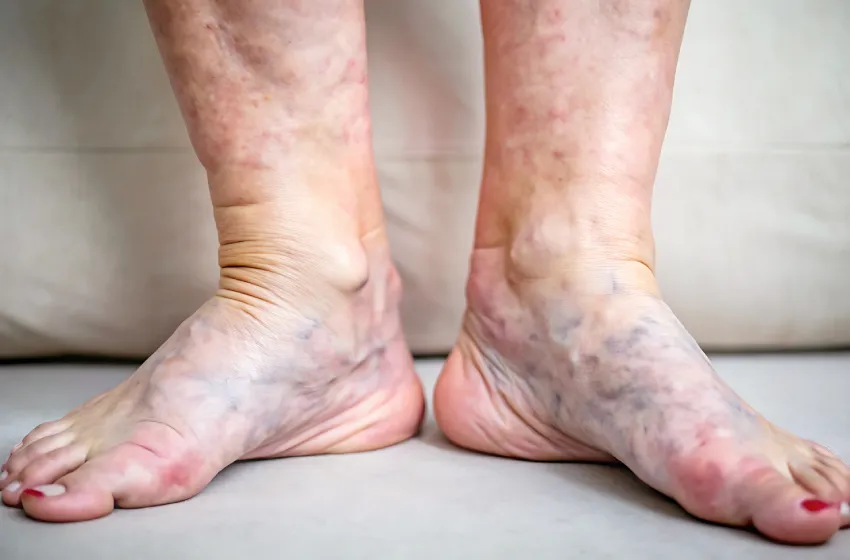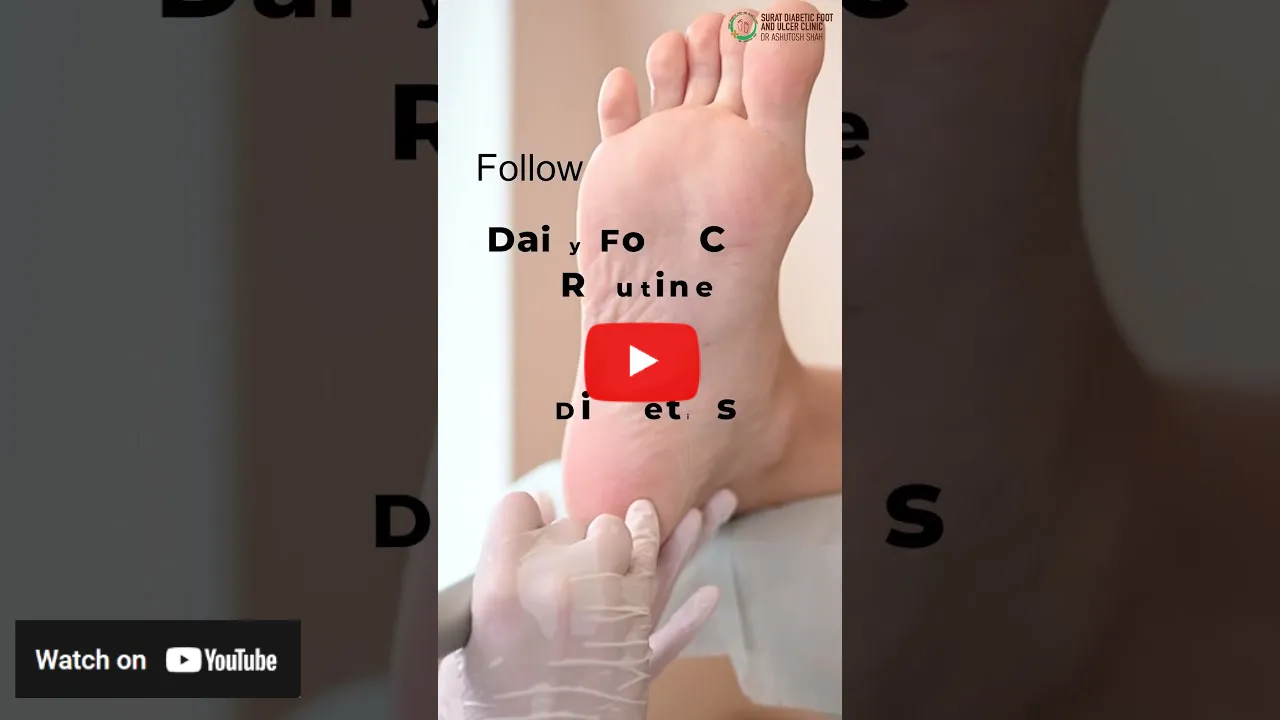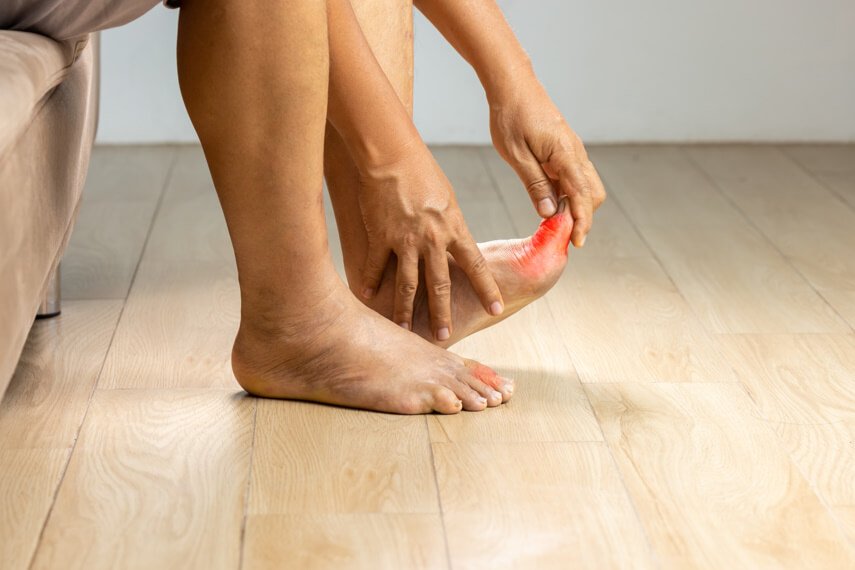Getting a Prosthetic Leg? Here’s what you need to know first.
What Is Charcot Foot Disease?
Charcot foot disease (also called neuropathic osteoarthropathy) is a serious condition in which the bones, joints, and soft tissues of the foot and ankle become damaged and deformed. It occurs most often in people with peripheral neuropathy (loss of nerve sensation), commonly due to diabetes. Because affected nerves can’t feel pain, even minor injuries, stress, or ulcers can go unnoticed and allow the bones in the foot to weaken and break over time. If untreated, Charcot foot can lead to collapse of the foot’s arch and permanent disability. Early recognition, noticing an unexplained red, warm, or swollen foot, is crucial, as prompt care can prevent severe deformities.
Causes of Charcot Foot Disease
Charcot foot disease is primarily caused by nerve damage (neuropathy) in the foot. The most common scenario is long-standing diabetes leading to peripheral neuropathy. High blood sugar over time injures nerves, so patients lose feeling in the feet. Without feeling pain, a small injury or repetitive stress (even from normal walking) can cause tiny fractures. Since the person doesn’t feel the injury, they often continue walking and worsen the damage. Over time this leads to bone fragmentation, joint dislocations, and collapsing arches. Contributing factors include poor blood circulation and repeated trauma to the foot.
Common causes and risk factors include:
- Diabetes and Neuropathy: Chronic diabetes is the leading cause; long-term high blood sugar causes nerve damage in the feet.
- Unnoticed Injury or Infection: Minor fractures, burns, or foot infections that go unnoticed due to numbness. For example, a small fracture may worsen if the patient keeps walking.
- Repetitive Stress: Continuous stress from walking on a weakened foot can break bones.
- Other Conditions: Charcot foot may also occur (rarely) with other neuropathies (e.g. alcohol-related nerve damage, spinal cord injury).
- Risk Factors: Having diabetes for many years, smoking, heavy alcohol use, high blood pressure, obesity, or kidney disease increases neuropathy risk, which in turn causes Charcot foot.
Understanding these causes helps doctors identify patients at risk and take steps to protect the foot before severe damage occurs.
Charcot Foot Signs and Symptoms
The early Charcot foot signs and symptoms can be subtle, which is why they often go undetected. Common warning signs include:
- Swelling: The affected foot or ankle may become very swollen, even if there is no obvious injury.
- Redness and Warmth: The skin over the foot may look red or feel unusually warm (often warmer than the other foot).
- Mild Pain or Discomfort: Although sensation is reduced, some patients still feel soreness. There may be a dull ache or pressure discomfort in the foot.
- Instability or Difficulty Walking: Patients often notice the foot feels unstable or “rocker-like,” making it hard to walk normally. A collapsed arch (rocker-bottom foot) may develop as the bones weaken.
- Deformity: Over weeks, the foot’s shape can change (e.g., the arch flattens, toes curl or shift). This deformity is referred to as “rocker-bottom” foot because the sole appears convex.
- Ulcers or Pressure Sores: As the foot shape changes, pressure points form that can cause ulcers (open sores) on the bottom of the foot.
Because many people with Charcot foot have reduced feeling, these symptoms may be mistakenly attributed to infection or arthritis. That is why any unexplained swelling, redness, or warmth in a diabetic foot should prompt immediate medical evaluation. Early detection of these Charcot foot signs and symptoms is vital to prevent further bone and joint destruction.
Charcot Disease and Its Relation to Diabetes
Charcot foot disease has a very strong link to diabetes. In fact, Charcot disease in diabetes is considered a serious diabetes-related complication of neuropathy. Most patients with Charcot foot have had diabetes for many years. Long-term high blood sugar causes nerve injury, leaving the foot numb and vulnerable. Research shows that Charcot foot almost always occurs in patients with diabetes, especially those who have lived with the disease for more than 7-10 years.
Risk factors that make a diabetic patient more likely to get Charcot foot include:
- Poor Blood Sugar Control: Chronically high glucose worsens nerve damage and circulation.
- Duration of Diabetes: The longer a person has diabetes, the greater the risk of neuropathy and Charcot changes.
- Lifestyle Factors: Smoking and heavy alcohol use further damage nerves and blood vessels.
- Other Health Issues: High blood pressure, obesity, high cholesterol, and kidney disease often accompany diabetes and raise neuropathy risk.
Because of this strong association, medical experts sometimes refer to it as a “diabetic neuropathic osteoarthropathy.” In practice, any diabetic patient with neuropathy must be especially vigilant for Charcot foot symptoms. Controlling diabetes through diet, medication, and lifestyle is the best way to reduce the risk of Charcot disease.
Charcot Foot Treatment Options
Treatment aims to stabilise the foot, prevent further damage, and promote healing. The approach can be categorised into non-surgical and surgical treatments.
Non-Surgical Treatments:
- Immobilisation: Using a total contact cast or removable boot to offload weight from the foot, allowing bones to heal properly.
- Custom Orthotics: Specialised Charcot foot shoes or inserts designed to redistribute pressure and provide support.
- Activity Modification: Limiting weight-bearing activities to prevent additional stress on the foot.
Surgical Treatments:
- Debridement: Removal of damaged tissue or bone to promote healing.
- Reconstruction: Realigning bones and joints to restore foot stability and function.
- Fusion: Fusing bones together to eliminate movement in damaged joints, providing stability.
The choice between non-surgical and surgical treatments depends on the severity of the condition, overall health, and response to initial therapies. At Surat Diabetic Foot and Ulcer Clinic, we offer personalised treatment plans, ensuring the best possible outcomes for our patients.
Recovery and Rehabilitation
Recovery from Charcot foot requires a comprehensive rehabilitation plan:
- Physical Therapy: Exercises to strengthen the foot and improve mobility.
- Monitoring: Regular follow-ups to assess healing progress and adjust treatment as necessary.
- Footwear Modifications: Transitioning to Charcot foot shoes that provide adequate support and protection.
Adherence to the rehabilitation plan is crucial for successful recovery and to prevent recurrence
Preventing Charcot Foot Disease
Preventing Charcot foot disease involves careful foot care and diabetes management. Patients should adopt the following strategies:
- Strict Blood Sugar Control: Maintain optimal blood glucose levels through diet, exercise, and medication. Good glycemic control reduces nerve damage over time.
- Daily Foot Exams: Inspect your feet every day for any redness, swelling, wounds, or deformities. Use a mirror or get help if you have trouble seeing the bottom of your feet. Early detection of minor changes is vital.
- Regular Professional Check-ups: Schedule routine foot exams with your doctor or podiatrist (at least once or twice a year). They can spot problems you might miss. Ask about checking sensation and circulation in your feet.
- Appropriate Footwear: Wear well-fitted, comfortable shoes at all times, even at home (avoid barefoot walking). Use socks that cushion and do not pinch. Shoes should have ample room for toes and no pressure points.
- Foot Hygiene: Wash and thoroughly dry your feet daily. Keep toenails trimmed and smooth to prevent ingrown nails and sores. Moisturise to prevent cracks but avoid lotion between toes.
- Lifestyle Habits: Avoid smoking and excessive alcohol; both worsen nerve and blood vessel health. Stay active with low-impact exercise (swimming, cycling) to improve circulation without over-stressing your feet.
- Protective Measures: If you have vision or balance issues, be extra cautious to avoid foot injuries. Even small cuts or blisters should be cared for promptly.
Implementing these measures can significantly reduce the risk of Charcot foot. As the Cleveland Clinic advises, early prevention (through blood sugar control and foot care) is key to avoiding severe complications.
Why Choose Surat Diabetic Foot and Ulcer Clinic for Charcot Foot Treatment?
At Surat Diabetic Foot and Ulcer Clinic, we are dedicated to providing exceptional diabetic foot care. Led by Dr. Ashutosh Shah, a renowned plastic surgeon with extensive experience in micro-vascular and plastic surgery, our clinic offers:
- Comprehensive Care: From diagnosis to rehabilitation, we provide a full spectrum of services for Charcot Foot Treatment.
- Advanced Techniques: Utilising the latest medical technologies and evidence-based practices to ensure optimal outcomes.
- Personalised Approach: Tailored treatment plans designed to meet individual patient needs.
- Multidisciplinary Expertise: A team of specialists, working together to provide holistic care.
- State-of-the-Art Facilities: Equipped with cutting-edge diagnostic tools and modern treatment solutions for diabetic foot wound care in Surat.
- Focus on Prevention: Emphasising patient education and preventive strategies to minimise complications and improve long-term foot health.
By choosing Surat Diabetic Foot and Ulcer Clinic, you are opting for expert care and a patient-centred approach that prioritises your well-being.
Conclusion
Charcot foot disease is a potentially disabling but manageable condition if caught early. Recognizing the red, swollen, warm foot of Charcot disease and seeking immediate medical attention can prevent permanent deformity and even amputation. With modern treatments, from custom braces and casts to reconstructive surgery, patients can often retain mobility and quality of life.
At Surat Diabetic Foot and Ulcer Clinic, our expert team is dedicated to comprehensive diabetic foot care. We emphasize early diagnosis, patient education, and personalized Charcot foot treatment plans. If you have diabetes and notice any unusual foot swelling, redness, or instability, contact our clinic right away. Prompt evaluation can make all the difference in preventing long-term complications and protecting your foot health.
Frequently Asked Questions
What causes Charcot foot disease?
The primary cause is nerve damage (neuropathy) in the foot, most often from long-term diabetes. With neuropathy, a person may not feel pain from a minor injury or infection. Because the injury goes unnoticed, the bones and joints can fracture or dislocate during normal activities. Over time, these micro-injuries accumulate, leading to Charcot foot deformities. High blood sugar and related conditions (like hypertension or kidney disease) that worsen neuropathy are key underlying causes.
What are the main Charcot foot signs and symptoms?
The earliest symptoms are often subtle. Look for swelling, redness, and increased warmth in the foot or ankle without any clear injury. Some patients feel mild pain or instability, but others may not feel anything at all due to neuropathy. In advanced cases, the foot arch may collapse (the “rocker-bottom” deformity), and ulcers can form on the sole. Any unexplained swelling or colour change in a diabetic foot should prompt an exam for Charcot changes.
How is Charcot foot diagnosed?
Diagnosis is made through clinical evaluation and imaging. A doctor will examine the foot for warmth, swelling, deformity, and compare sensations between feet. If Charcot foot is suspected, X-rays and MRI or bone scans can identify fractures, dislocations, and joint changes. Early on, X-rays might look normal, so MRI or bone scans are helpful to catch early bone injury. A history of diabetes and neuropathy, along with exam findings, helps confirm the diagnosis.
What treatments are available for Charcot foot?
Treatment for Charcot foot focuses on immobilizing the foot and preventing further injury. In the acute phase, this usually means strict off-loading: wearing a total contact cast, walker boot, or using crutches/wheelchairs to keep all weight off the foot. As swelling decreases, patients transition to custom braces or Charcot shoe inserts for protection. If needed, surgery (bone realignment or fusion) can stabilize the foot. The exact plan depends on severity; early-stage cases often heal without surgery, while advanced deformities may require reconstruction or, rarely, amputation.
How can Charcot foot be prevented?
Preventing Charcot foot is largely about good diabetes and foot care. Keep blood sugar under control to prevent neuropathy. Inspect your feet daily for any swelling, redness, cuts, or sores. Visit your healthcare provider regularly for foot exams. Always wear proper shoes and socks (never go barefoot), and manage other health factors (quit smoking, maintain healthy blood pressure/weight). These steps help catch minor foot issues early and protect nerve health, greatly lowering Charcot risk.
How long does it take to treat Charcot foot?
The active, healing phase of Charcot foot can last several months up to a year, depending on severity and adherence to treatment. During this time, strict off-loading is critical. Many patients need casts or braces for 3–6 months until X-rays show healing. Even after bones heal, prolonged use of special shoes or braces may be recommended to prevent relapse. Recovery is gradual, and ongoing care is essential to maintain foot stability.
What are the “6 D’s” of Charcot foot?
Doctors often describe Charcot radiographic findings by the “6 D’s”:
Distension: Swelling of the foot joints.
Dislocation: Joints that have shifted or dislocated.
Debris: Bone fragments or loose pieces on X-ray.
Density: Increased bone density (sclerosis) around joints.
Destruction: Erosion or collapse of bones/joints.
Deformity: Visible change in foot shape (e.g., rocker-bottom).
These features on an X-ray or clinical exam strongly suggest Charcot foot.
Who is most at risk for Charcot foot?
People at highest risk are those with long-standing diabetes and neuropathy. Other risk factors include having had diabetes for many years, poor glucose control, smoking, high blood pressure, obesity, or kidney disease. Essentially, any factor that damages nerves in the feet raises the risk. Regular foot care is especially important for these high-risk patients.






.jpg)

